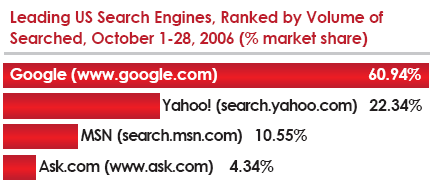Managing Your PPC Campaign Budget

by Kevin Amos VP of Strategic Planning, IMPAQT
So you've begun the process of setting up your pay per click (PPC) campaign. While there are hundreds of articles and discussion boards on the importance of setting up goals and expectations and of course keyword research; there is not much information about budget allocation. Although no one can explicitly tell you how much money you should be allotting to a certain keyword, or how much to designate for each search engine, there are a few best practices and industry insights that can guide you in determining where your budget should go and why.
Should I Only Advertise in Google?
While Google, MSN and Yahoo! are the largest companies in the PPC industry, there are hundreds of other engines to choose from. Depending on your goals, you may want to investigate some of the smaller, second tier engines such as MIVA or Enhance or a niche engine like Business.com. Taking a look back to even just five years ago, PP C advertising was inexpensive with high conversion rates. Fast forward to 2008 and search has become a highly competitive market with clicks in certain categories costing up to $40 each. It's no surprise that people just entering the search space can find this overwhelming; even those of us who have been involved since its infancy are constantly learning, adjusting and capitalizing on various products, features or services offered by the engines.
So is Google the only option to choose in order to see a significant ROI? Of course not. But since Google, Yahoo! and MSN hold the lion's share of the Internet marketing pool you will likely see a quicker ROI using those engines.
Taking a look at a 2006 eMarketer report, its obvious Google holds the market share of search volume. Thus, it makes sense to allocate your budget according to the percentage of market share. For example, In 2006 Google had 60% of the market share, so you would allocate 60% of your overall budget to Google.

Additionally, you have to look at your overall goals and where you stand regarding your experience with SEM. If this is your fist time testing the PP C waters you want to start small and choose one of the smaller engines such as MSN or Yahoo! to work with. With each engine running on a different set of rules, standards and regulations, coupled with different budgets per campaign can mean plenty of confusion for first time PP C advertisers.
Budget Allocation
It's very rare that a campaign will have a limitless budget. For this reason, budget allocation is an important aspect of SEM implementation. The allocation of funds directly affects the visibility of your ad campaign. For instance, having a campaign set too low for the amount of search volume that is occurring will limit campaign visibility. Although this step is crucial for the success of your campaign, there are no tried and true guidelines to follow for fund distribution. While you want to ensure that your top producing keywords get an adequate amount of budget, you don't want to exclude other keywords or test campaigns from being visible. Initial budget allocation is a bit of a shot in the dark. Think of this as your starting position and one that you can adjust and tailor as you get more information.
Some tips to maximize your budget spending include:
1. Consider what engines you will be launching your campaign with. Typically Google receives the most traffic and therefore should get a higher percentage of your budget.
2. Consider your target audience demographics as well as industry specific considerations. For example, MSN is the leading search engine for the financial industry, so bids are much more expensive in MSN than in Google or Yahoo! for many financial terms.
After launch, you will begin to notice trends as to which engines, campaigns, keywords, etc. are spending and which are not. You can then begin shifting your budget accordingly. Most commonly, you will find that your branded keywords will be your top performers. Obviously, these should get enough of your budget to ensure that they are visible. However, non-branded and lower-performing keywords are important to include in your campaign as searchers tend to use these during their research process prior to making a conversion. Having a cumbersome keyword list can be difficult to manage and drain your budget - finding the right balance can be tricky, but is a key to a successful campaign.
There are several common pitfalls to avoid when managing your campaign's budget including engine overspending and misinterpreted budget changes. Google will allow you to go over your daily budget by 20 percent and Yahoo! will allow you to go over by 15 percent. Additionally, a tip to keep in mind if the need for a budget change arises is that it is best to do so early in the day. Greatly reducing your budget in the afternoon makes engine anxious about the possibility that you overspent and it is possible that they will turn off your accounts.
In the end, adding PP C to your existing marketing initiatives is a great way to see a quick return on investment through increased targeting traffic to your Web site. While setting goals and keyword research lay the backbone to your campaign; appropriate budget allocation can make your efforts either sink or swim.









